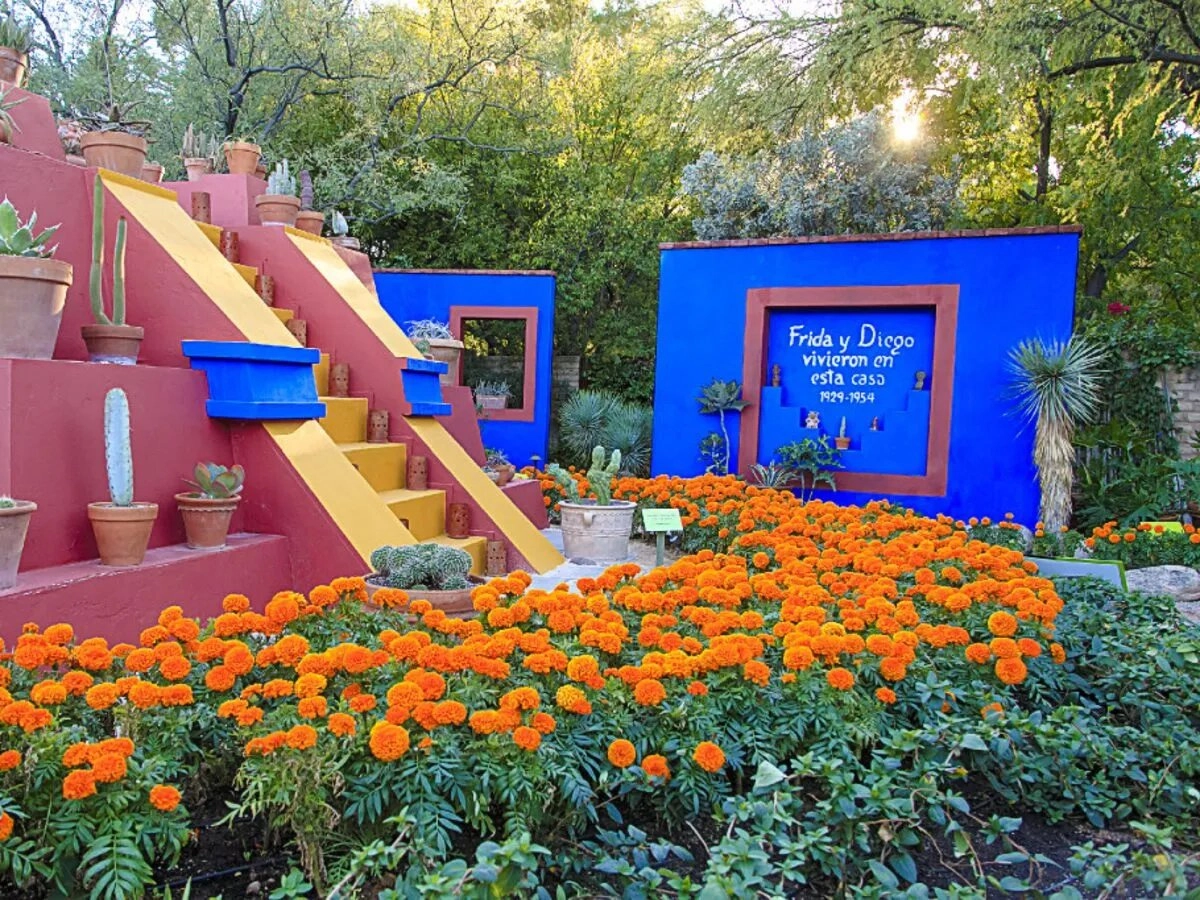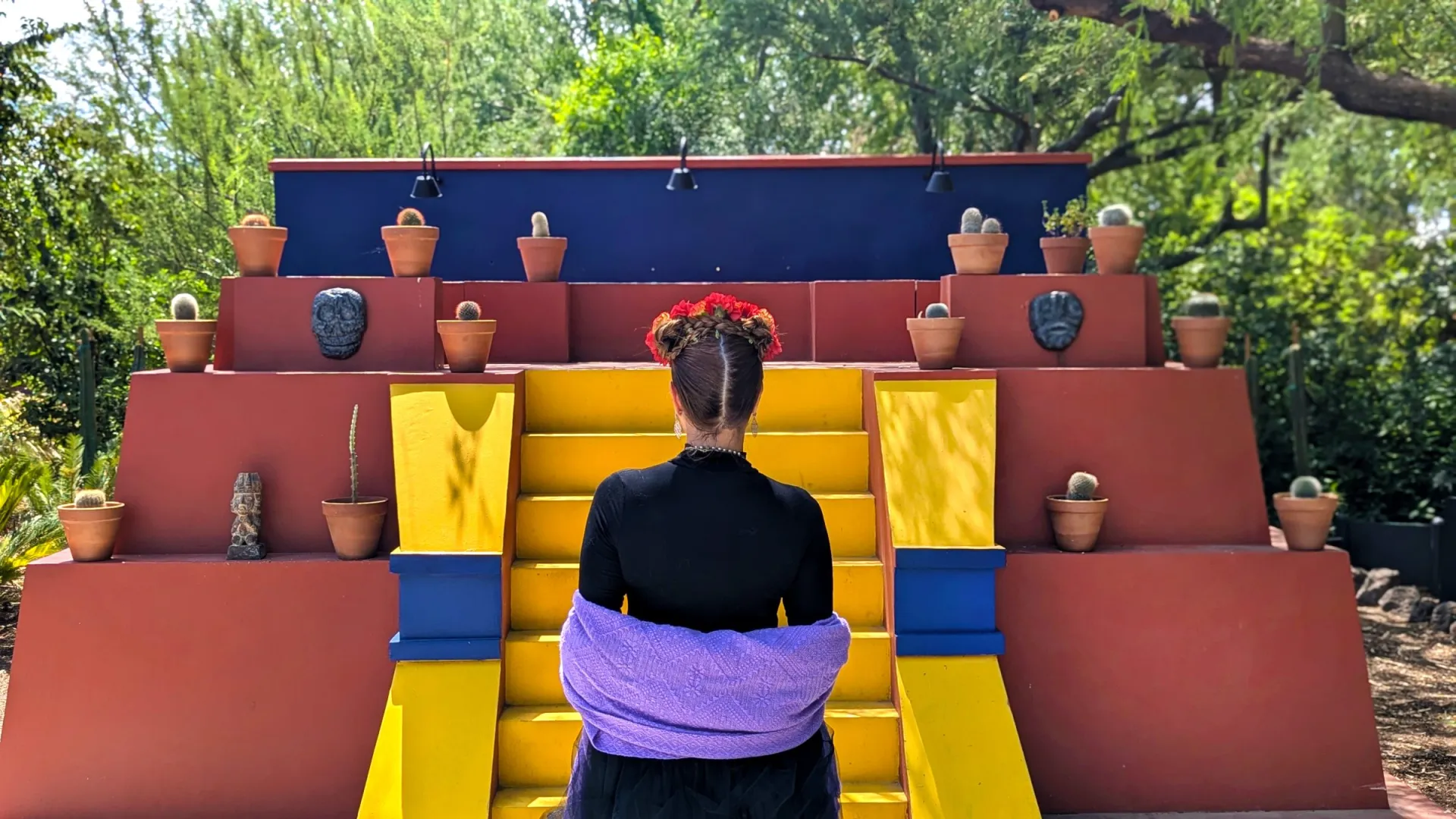The iconic garden of Frida Kahlo’s Casa Azul—with its Mexica-inspired pyramid, frog pond, famous blue walls, and the inscription “Frida and Diego lived in this house 1929–1954”—has been faithfully recreated in Arizona. The open-air exhibition, titled “The Garden of Frida,” is inspired by the original garden at the Frida Kahlo Museum (MFK) in Mexico City and opened on October 11 at the Tucson Botanical Gardens (TBG).
This traveling project, which bears the Coyoacán painter’s name, has previously appeared at botanical gardens in San Antonio, Texas, and Naples, Florida. Each installation adapts to its surroundings, reflecting the region’s climate and native plant species. In Tucson, for example, a local pale yucca stands beside Mexico’s elephant-foot yucca, symbolizing the fusion between both landscapes.
The TBG’s mission is to connect people with plants and nature through art, science, history, and culture. Spanning 2.2 hectares, the gardens have dedicated roughly 465 square meters to The Garden of Frida, located between the Mexican-American neighborhood garden and the garden honoring Brazilian artist and landscape designer Roberto Burle Marx. The Tucson complex features 20 individual gardens, all outdoors.
Michelle Conklin, President and Executive Director of the TBG, said: “Frida’s garden is true to her bold aesthetic, with color playing a central role. It’s also a deeply personal space inspired by her love for nature.”
According to Perla Labarthe, Director of the MFK, this three-year collaboration between the Frida Kahlo Museum and the Frida Kahlo and Diego Rivera Museums Trust aims to “extend the blue walls of the Coyoacán home into new communities like Tucson. The TBG team has done an extraordinary job recreating a little piece of Casa Azul for their visitors.”
Labarthe added: “We want to share this space because it was a source of inspiration for Frida. She lived 36 of her 47 years there—it reflects her identity and personality. We often say that Casa Azul is Frida, and Frida is Casa Azul. The garden was both a creative and educational space; it was where she began teaching her students from La Esmeralda, known as ‘Los Fridos.’”
Because plants are living, evolving organisms, the garden has changed over time. “We discussed with specialists how they considered different historical moments of the garden. For example, they planted a jacaranda tree so that it will grow and bloom in March,” she noted. The Tucson team studied not only the garden’s current appearance but also historical photographs and archival footage from its original creation.
The Casa Azul garden has undergone many transformations. “When Frida lived there with her family, her mother managed it. After marrying Diego, the home—and the garden—took on a new personality. It became a space to welcome friends and showcase what they valued: art, ideas, and Mexican heritage. That’s why color and native plants are so important,” Labarthe explained.
Originally, Frida filled the garden with cacti, yuccas, and succulents, and the Tucson team sought to identify similar species. Some substitutions were made, favoring native plants from southern Arizona that resemble those of Mexico.
The design planning began two years ago, and the TBG has expressed hopes for the garden to become a permanent installation. “We love the idea of sharing this garden permanently with our colleagues and audiences in Tucson,” Labarthe concluded.




